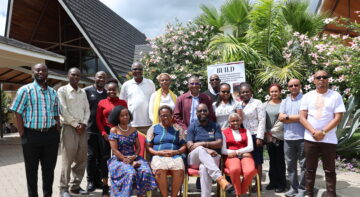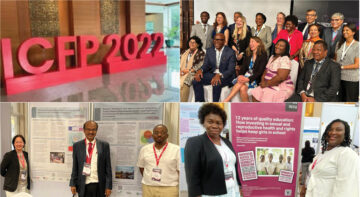News

According to WHO, women and girls are disproportionately exposed to risk, increased loss of livelihoods, security, and even lives, during and in the aftermath of disasters. In general, natural disasters kill more women than men and kill women at a younger age than men. The 2015 world population day theme, saving vulnerable populations in emergencies could not come at a better time seeing that populations across the globe are grappling with a myriad of disasters, from armed conflict, terrorism, and climate-related calamities such as flooding, drought, earthquakes, among others.
In Kenya, the event usually celebrated on 11th July every year, was marked at a colourful event in Narok county at the Maasai Mara University grounds. According to the national organising committee (of which AFIDEP was part) led by the National Council for Population and Development (NCPD), the location of the national celebrations was picked based on the fact that Narok was rocked by devastating flash floods earlier this year, which led to the loss of several lives and destruction of property worth millions. It therefore seemed befitting for national leaders and other stakeholders working on population-related issues, to celebrate the day with a community that has felt the bite of disaster in recent days.
Disaster preparedness also a personal responsibility
The event was graced by Senior Director of Administration Devolution & Planning, Mr. Hassan Noor Hassan, representing the Cabinet Secretary Ministry of Devolution and Planning, Hon. Anne Waiguru. Reading the CS’s official speech, Mr. Noor indicated that it is a good time for the country to take stock having taken serious hits from terrorism and natural disasters in the recent past, so we can build a resilient nation. He cited education and information sharing, particularly creating awareness among the public as key to curbing the impact of disasters. “It is also critical for us to plan for our cities and towns,” he continued. According to a 2009 study by Benedict F. Malele published in the Journal of Disaster Risk Studies, laxity in enforcing the laid down planning rules, regulations and procedures facilitates the accumulation and occurrence of disaster risks and disasters in urban areas. This undermines one of the central roles of urban planning, which is to protect the lives of people from disaster risks and disasters.
Further, Mr. Noor emphasised that disaster preparedness needs to be understood at the community-level as different communities experience different calamities. County governments therefore have the duty to allocate the necessary resources and strategies to reduce the specific disaster risk.
“In times of crisis, women and girls face the greatest risk of abuse, sexual exploitation, forced marriage, reproductive health-related illnesses, and death, due to lack of protection and absence of aid delivery to address their needs. We therefore need to plan for reproductive health services in emergency situations. Being resilient means having the plans, resources and capacity to curb disaster,” he said. He also indicated that disaster preparedness calls for personal responsibility to prevent disasters as the extensive destruction of the Mau forest for instance, has a huge part to play in the flooding witnessed in Narok.
Time to act
In a speech read by his representative, the governor Narok county, Samuel Kuntai Ole Tunai indicated that the county now has an integrated development plan to mitigate future disasters such as the recent flash floods. The county is planning on the construction of 8 check dams to slow the speed of water coming from upper stream with the help of the national youth service (NYS) servicemen and 1000 youth from the county. “Whenever disaster strikes, we are reminded of how vulnerable we are and therefore need to do everything in our mortal power to mitigate risks and reduce the number of casualties during emergencies”¦The recent floods were a command from nature for us to pull up our socks and fold our sleeves to work tirelessly and safeguard our people…” his speech read in part.
A poor drainage system in the county has also been largely blamed for the Narok floods. In his speech, governor Tunai indicated the county has made a budgetary allocation towards re-engineering the drainage system. The county administration is also committed to ensuring access to reproductive health services, increasing effectiveness of maternal healthcare, reducing infant mortality and is slowly making access to healthcare for all residents a reality. This is in addition to enhancing access to quality education to increase literacy levels among the people of Narok, and promoting livelihoods through livestock keeping and agriculture.
The capacity gap
Further, the governor cited the lack of sufficient capacity in handling disasters. He indicated that with devolution, counties need material and human resources for disaster preparedness. He cited the need for disaster management teams and infrastructure development, mechanisms to ensure sustainable livelihoods, drought risk management and coordination, institutional development, and knowledge management within counties.
Save our women and girls
Despite the fact that disaster preparedness should encompass the entire population, we should not lose sight of the vulnerability of women and girls in times of calamity. As CARE summarises it:-
- After floods, earthquakes or conflict, women and girls aren’t just left without shelter and food. They also go without special medical care or defense against dangers like human trafficking.
- When clinics are wiped out by storms, pregnant women may face dangerous deliveries.
- In unlit, unprotected refugee settlements, teen girls walking in the evening may be at risk for harassment or rape.
- After a crisis destroys a family’s livelihood, domestic violence can increase dramatically. Catastrophes may make it impossible for children, and especially girls, to go to school.
Speaking at the event, Dr Josephine Kibaru – Mbae, the Director General, NCPD, placed emphasis on the need for family planning as we work towards building the resilience of our communities. “It’s not about the [population] numbers, but the quality of those numbers,” she concluded.
See related stories here:
When disaster strikes, women and girls are the backbone of resilience
NCPD holds press briefing ahead of world population day
Related Posts





